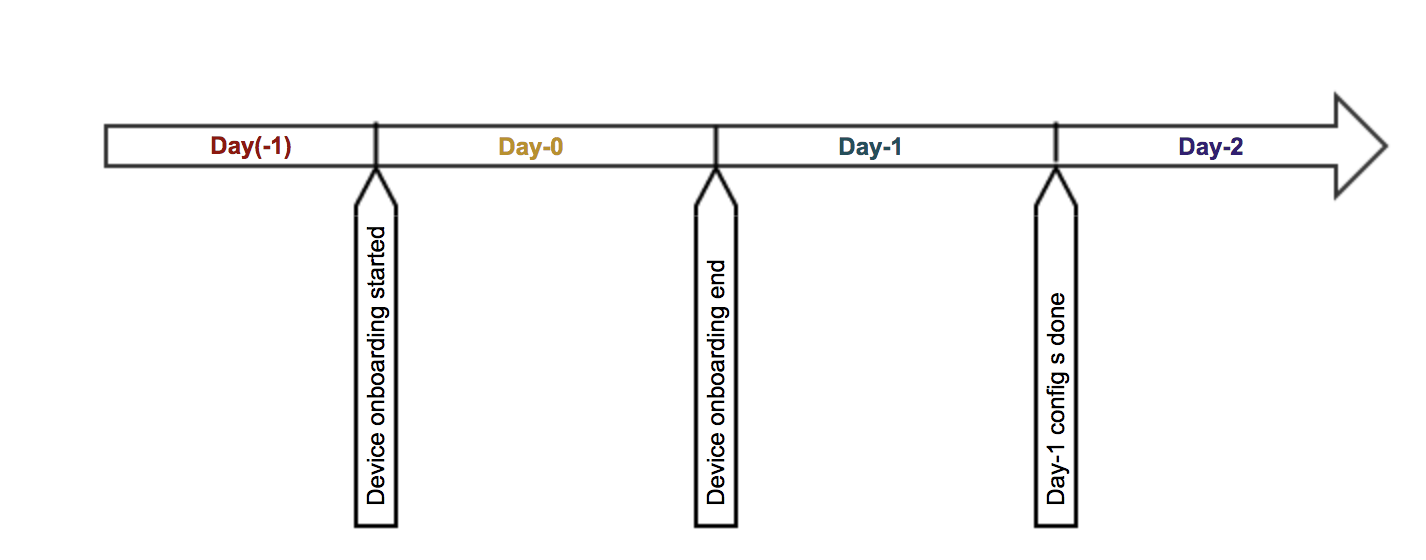In the world of network automation, network function virtualization and cloud deployment it very common to come across terms like Day(-1) "Day-Minus-One", Day-0 "Day-Zero", Day-1 "Day-One", Day-2 "Day-Two" and Day-N "Day-N". This terms are widely used but not well defined, sometimes leading to misunderstanding and confusion. This blog post is an attempt to arrive at an common understanding and definition of these terms. (feedback and comments are welcome).
Definitions
Device configuration can be classified as Day(-1), Day-0, Day-1 and Day 2..N based on when they are applied to the device.


Conventions /Best-Practices/Guidelines/Recommendations:
Technically, the classification of configuration into Day-0,1,2,N is based on when the configurations is applied rather than what the configuration is trying to do.
The terms Day-0,1,2, etc. are also used in IT operations and other cloud operations domain. In these domains the classification of configurations into Day (-1),0,1,2,N the definitions vary slightly.
To align with the "general" understanding of the terms Day(-1),0,1,2,N, we recommend the following conventions.
